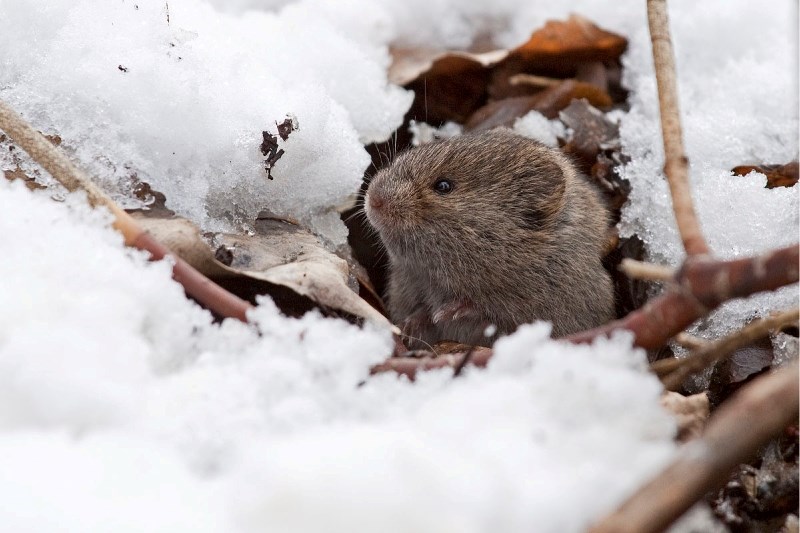If you head out into the snow this week, you might want to watch your step — you could be treading on someone's home.
Those vast, sparkling fields of unbroken snow look still and peaceful, but they are actually full of life, with many winter critters making their homes underneath the surface.
Al Doberstein says he had many encounters with those creatures while he was a trapper near Big Lake. "They really don't surface much," he says, and often are only found by their tracks.
If you follow a coyote or fox though, they'll often lead you right to them. You'll see the beasts standing around and listening, when all of a sudden they'll rise up and plunge into the snow to catch a hidden mouse.
You might also stumble upon a ptarmigan taking a nap under the snow, says Stan Boutin, a biologist at the University of Alberta who studies under-snow life. "Every once in a while you can be walking along through a forest and all of a sudden these guys will explode out of the snow and scare the hell out of you."
Warmth beneath the snow
These birds and beasts all live in the subnivean, or under-snow, environment —a dark, warm place inhabited by mice, voles, lemmings, squirrels and some birds.
These animals are too small to survive the north's winters on their own, Boutin says, but can wait it out with a thick layer of snow — usually about 15 centimetres worth. This ice blanket traps heat near the surface of the ground and melts the snow, creating a gap for animals. Here, the temperature stays near a constant 0 C all winter, insulating animals from the wild temperature swings found on the snow's surface. "It's just like down feathers." Little light gets through the snow, so it's pretty dark.
It's very tough to see this zone for yourself, Boutin says, as it's destroyed as soon as you dig into it. Your best bet is to look for entrances: small holes ringed with hoarfrost, often in forests or fields with stubble, which may be surrounded by tracks.
The undergrounders
One of the more common subnivean animals is the meadow vole, Boutin says. A chubby, tailless mouse with tiny ears and a stubby nose, it spends its winters under the snow chewing seeds and grass, leaving a subway's worth of tunnels on your lawn come spring. Pay attention after the snow melts, Doberstein adds, and you might see one of their palm-sized grass nests.
The meadow vole is actually an immigrant from Pennsylvania, says Edmonton naturalist Jim Butler, having worked its way up here through fields and road allowances. "They're made to live under the snow."
You can find them in any field; the forests are home to their cousins, the red-backed vole.
You're not likely to see a meadow vole in the winter, Doberstein says, since they stay under the snow, but you might spot some of its many predators. Short-tailed weasels infiltrate vole holes to sniff them out and can be spotted by their tiny tracks. Stand still in a forest and they might come by to investigate your camp.
Owls will dive-bomb the snow to catch voles, Butler says. Using their face-feathers as a parabolic dish, they listen for rodents and try to pounce on them, leaving owl-shaped craters in their wake.
Red squirrels are occasional residents of the subnivean, as they store their food in underground caches. They usually run to and from their cache, Doberstein says, leaving an obvious trail of prints and pinecone husks. Most dig an elaborate network of tunnels that extend for up to 30 metres from the cache, Boutin adds.
Pheasants and ptarmigans also visit the subnivean, Doberstein says, burrowing deep in the snow at night to take advantage of its warmth. This is dangerous, he adds, as they can suffocate if a rain freezes the snow's surface.
It's unlikely that you'd trample a vole or weasel while on a romp in the snow, Boutin says, as they have plenty of room to run. Snowmobiles could flatten some areas, but would otherwise have little impact.
Still, keep an eye out this winter and you might catch a glimpse of a world beneath your feet.




